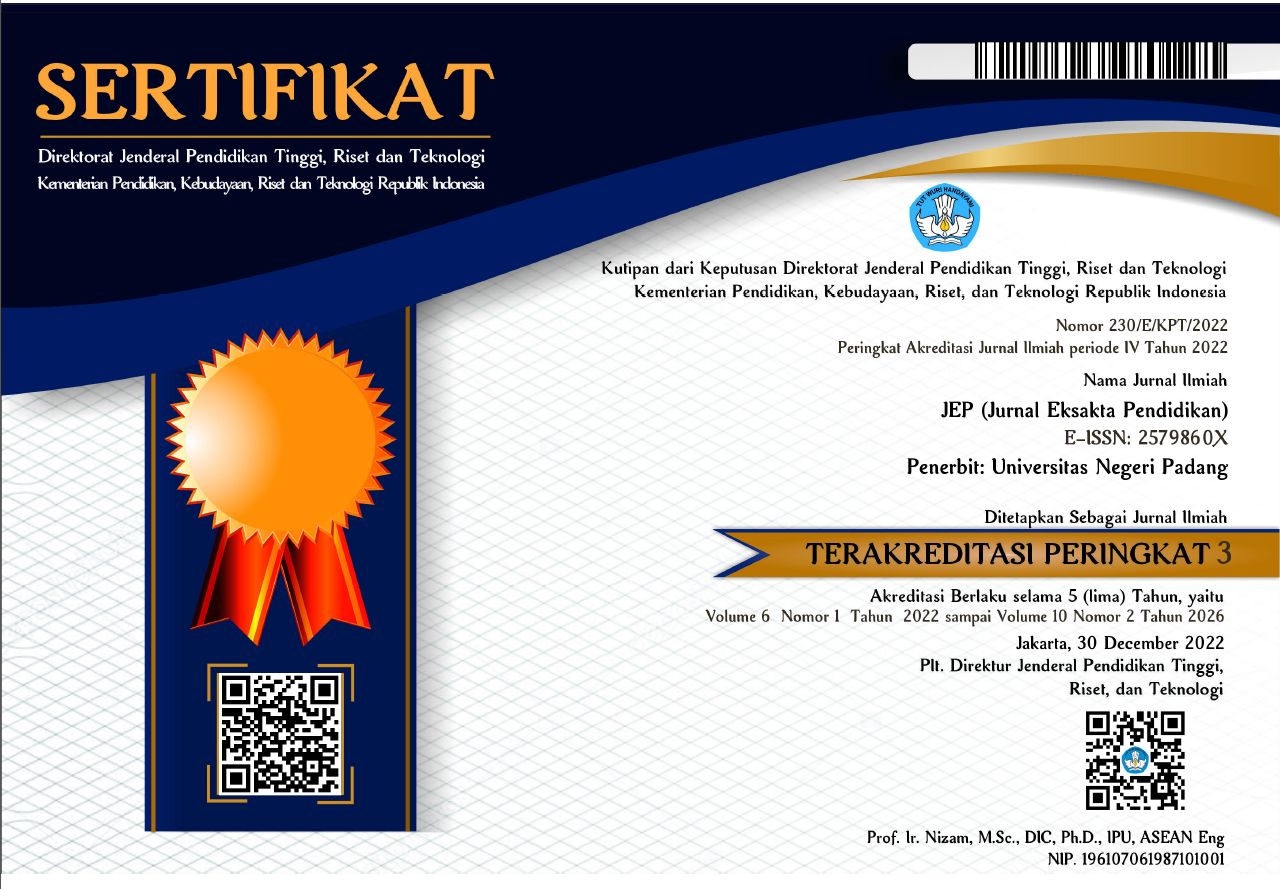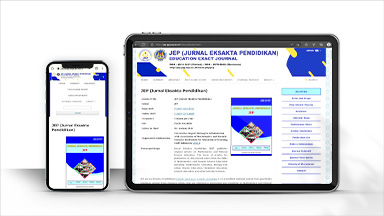Kemampuan Representasi Matematis Siswa melalui Model Problem Based Learning pada Materi Lingkaran dengan Konteks Kepramukaan di SMP
Abstract
Mathematical representation ability is a useful ability for students to develop and optimize their mathematical abilities. The real situation shows that the importance of the ability of mathematical representation has not been matched by student achievement. This condition can be solved by applying problem based learning model to learning in a context that is familiar to students such as scouts. The aim of this research is to explain the ability of students’ mathematical representation through the Problem Based Learning model with scouts context on circle material at SMPN 8 Banda Aceh. This research used qualitative approach with a type of research is descriptive. Data obtained through tests of student’ mathematical representation abilities and interviews. The ability of students’ mathematical representations was analyzed by utilizing the data obtained in student learning in groups through PBL model and data of result test after the application of PBL model. The achievement of this research is the ability of students’ mathematical representation during learning with PBL model in groups is accordance with the ability of students’ mathematical representation after applying the PBL model. The mathematical representation ability of high ability students is able to complete all of the indicators of the mathematical representation ability, students who are in the medium ability only complete indicators of visual and symbolic representation, and low ability students only able to complete indicator of visual representation, although not perfectly.
Downloads
References
Akinoglu, O., & Tandogan, R.O. (2007). The Effects of Problem Based Active Learning in Science Education on Students’ Academic Achievement, Attitude and Concept Learning. Eurasia Jornal of Mathematics, Science, & Technology Education, 3(1), 71-81.
Depdiknas.(2006). Standar Isi untuk Satuan Pendidikan Dasar dan Menengah. Jakarta.
Fyhn, A.B. 2010. Climbing and Angles: A Study of how two Teachers Internaliseand Implement the Intentions of a Teaching Experiment. Educational Studies in Mathematics, 67(1), 19-35.
Hutagaol, K. (2013). Pembelajaran Kontekstual untuk Meningkatkan Kemampuan Representasi Matematis Siswa Sekolah Menengah Pertama.Jurnal Ilmiah Program Studi Matematika STKIP Siliwangi Bandung, 2(1), 86-99.
Johar, R. (2016). Strategi Belajar Mengajar. Yogyakarta: Deepublish.
Luitel, B.C. (2017). Representation: Revisited. Australia: Curtin University of Technology.
Maghfirah, R. (2017). Peningkatan Kemampuan Representasi dan Disposisi Matematis Siswa MTsN melalui Penerapan Model Problem Based Learning. (Thesis, Universitas Syiah Kuala, 2017).
National Council of Teachers of Mathematics (NCTM). 2000. Principles and Standards for School Mathematics. United States of America.
Rofiki, I. (2013). Profil Pemecahan Masalah Geometri Siswa Kelas Akselerasi SMP Ditinjau dari Tingkat Kemampuan Matematika.Surabaya: UNESA.
Putriana, S. (2013).Pengaruh Belajar Kelompok dan Motivasi Belajar Siswa Terhadap Prestasi Belajar Siswa Kelas VIII SMP Negeri 23 Purworejo.Jurnal Oikonomia, 2(4), 325-330.
Sari, S.W. (2012). Pengaruh Model Pembelajaran dan Tipe Kepribadian Terhadap Hasil Belajar Fisika pada Siswa SMP Swasta di Kecamatan Medan Area. Jurnal Tabularasa PPS UNIMED, 9(1), 33-44.
Sulastri.(2017). Kemampuan Representasi Matematis Siswa Kelas VII SMP melalui Pendekatan Matematika Realistik. (Thesis, Universitas Syiah Kuala, 2017).
Suprihatiningrum, J. (2016). Strategi Pembela
jaran: Teori & Aplikasi. Jogjakarta: Ar-ruzz Media.
Widjaja, W. (2013).The Use of Contextual Problems to Support Mathematical Learning.IndoMS-JME, 4(2), 151-159.
Widyawati, W., Putri, R. I. I., Somakim.(2016). Desain Pembelajaran Sudut Menggunakan Konteks Rumah Limas di Kelas VII. JINoP (Jurnal Inovasi Pembelajaran), 2(2), 437-448.
Copyright (c) 2019 Rahmah Johar, Suaibatul Aslamiah

This work is licensed under a Creative Commons Attribution 4.0 International License.

This work is licensed under a Creative Commons Attribution 4.0 International License.




_(2579-860X).png)
_(2614-1221)1.png)




